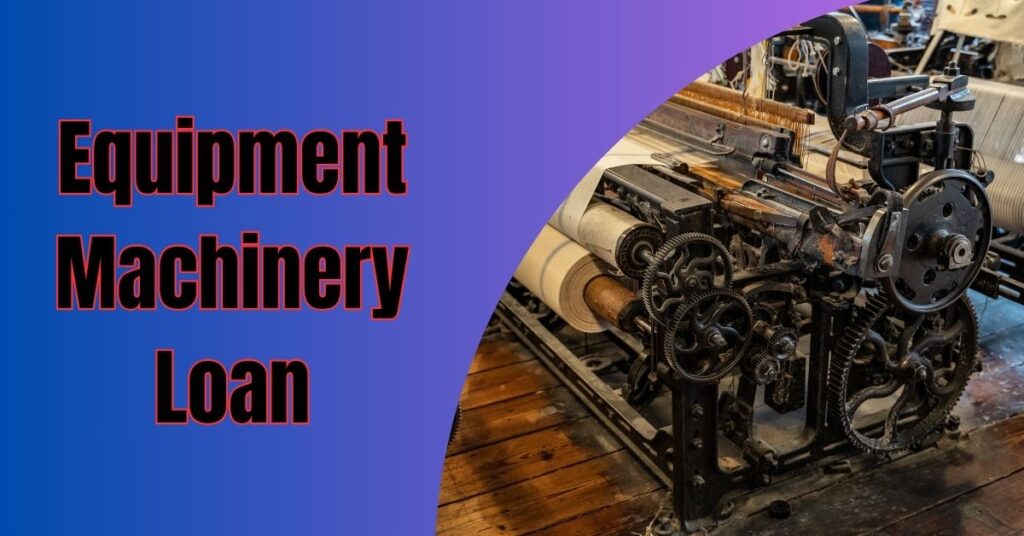
Equipment Financing
Securing equipment financing can be a game-changer for businesses looking to upgrade their operations without depleting their cash reserves.
Whether you’re in construction, manufacturing, or any other industry that relies on specialized equipment, having access to the right tools can enhance productivity, reduce operational costs, and improve overall efficiency.
However, obtaining the funds to purchase or lease equipment can feel overwhelming. Luckily, securing equipment financing doesn’t have to be a complicated process. Here’s a simple guide on how to do it in five straightforward steps.
Step 1: Determine Your Financing Needs
Before diving into the financing process, it’s essential to assess your business’s needs. What type of equipment do you require? How much will it cost? Do you want to purchase or lease it? These are critical questions to consider.
Equipment financing options vary, so understanding what you need will help you make an informed decision.
Additionally, take the time to evaluate your budget and cash flow. How much can you afford to borrow or lease monthly without overextending your financial capacity? Determining the exact amount of financing needed will streamline the process and prevent you from overborrowing.
Step 2: Research Financing Options
Once you’ve identified your needs, it’s time to explore the various financing options available. Equipment financing typically falls into two categories: equipment loans and equipment leases.
- Equipment Loans: These loans allow you to borrow money to purchase the equipment. Once you’ve paid off the loan, the equipment becomes yours.
- Equipment Leases: With an equipment lease, you essentially rent the equipment for a set period. At the end of the lease term, you may have the option to purchase the equipment, renew the lease, or return it.
Other options include manufacturer or dealer financing, which may offer favorable terms but can limit your choices to specific brands or models. Online lenders, banks, and credit unions are also common sources for financing.
Each financing option has its pros and cons, so weigh them carefully based on your business’s current financial standing and long-term goals.
Step 3: Check Your Creditworthiness
Your credit score plays a significant role in securing equipment financing. Lenders will typically assess your business credit score, as well as your personal credit score if you’re a small business owner or a startup.
Higher credit scores generally lead to more favorable terms, such as lower interest rates and longer repayment periods.
If your credit score isn’t where you want it to be, you may need to work on improving it before applying for financing. This could involve paying down existing debt, correcting any errors on your credit report, or making consistent on-time payments for a few months.
In some cases, lenders may offer equipment financing to businesses with less-than-ideal credit, but be prepared for higher interest rates or shorter loan terms.
Step 4: Gather the Necessary Documentation
Once you’ve chosen a financing option and determined your creditworthiness, it’s time to gather the documents that lenders will require. These typically include:
- Business Financial Statements: These documents show your company’s income, balance sheet, and cash flow.
- Tax Returns: Lenders will often ask for tax returns from the last 1-3 years.
- Business Plan: A solid business plan can provide context to lenders on how the equipment will contribute to your growth and revenue.
- Personal Financial Statement: If you’re applying as a small business or startup, personal financial statements may be necessary, especially if you haven’t built significant business credit yet.
Having these documents prepared ahead of time will streamline the approval process and help you avoid unnecessary delays.
Step 5: Apply and Finalize the Deal
With your documentation in hand, it’s time to apply for equipment financing. Whether you apply online, in-person, or over the phone, make sure you read all terms and conditions carefully before signing any agreements.
Pay attention to interest rates, payment schedules, and any additional fees that might be involved.
Once you’ve signed the financing agreement, the lender will provide the necessary funds, and you can purchase or lease the equipment. Be sure to keep track of your payment schedule and stay on top of your obligations to avoid late fees and damage to your credit score.
Conclusion
Securing equipment financing doesn’t have to be a daunting task. By following these five simple steps—determining your needs, researching your options, checking your creditworthiness, gathering the required documentation, and applying for financing—you can secure the funding you need to grow and improve your business.
With the right equipment in place, you’ll be able to enhance productivity, reduce costs, and ultimately achieve greater success in your industry.
For more posts, Click Here







